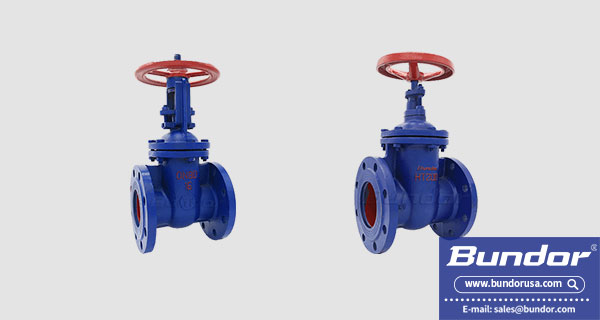The difference between Non-Rising Stem Gate Valve and Rising Stem Gate Valve
The main differences between Rising Stem Gate Valve and Non-Rising Stem Gate Valve:
1. The lifting screw of Non-Rising Stem Gate Valve is only rotating without moving up and down. The exposed one is only a rod. The nut is fixed on the gate. The screw is used to lift the gate. There is no visible door. The lifting screw of the open gate valve is exposed, the nut is close to the hand wheel and is fixed (not rotating or axially moving), and the sliding plate is used to lift the shutter, and the screw and the shutter have only relative rotational motion without Relative axial displacement, the appearance is a door bracket.
2, Non-Rising Stem Gate Valve can not see the screw, and Rising Stem can see the screw.
3. When the Non-Rising Stem Gate Valve is switched, the steering wheel and the valve stem are connected together and relatively stationary. It is rotated by the valve stem at a fixed point to drive the valve upward and lower to complete the opening and closing. The Rising Stem Gate Valve lifts or lowers the flap by threading the stem and steering wheel. To put it simply, the Rising Stem Gate Valve is a flap that is moved up and down with the valve stem, and the steering wheel is always at a fixed point.

The gate valve can be divided into: according to the structure of the valve stem:
1. Rising Stem Gate Valve: The stem nut is on the bonnet or bracket. When opening and closing the gate, use the rotary stem nut to raise and lower the stem. This structure is advantageous for the lubrication of the valve stem, and the degree of opening and closing is obvious, so it is widely used. Usually there is a trapezoidal thread on the lifting rod, and the rotary motion is changed into a linear motion by the nut at the top end of the valve and the guide groove on the valve body, that is, the operating torque is changed to the operating thrust. The opening and closing part of the Rising Stem Gate Valve is the ram. The direction of movement of the ram is perpendicular to the direction of the fluid. The open gate valve can only be fully open and fully closed, and cannot be adjusted and throttled.
2, Non-Rising Stem Gate Valve: Non-Rising Stem Gate Valve is also called rotary rod gate valve (also known as dark rod wedge gate valve). The stem nut is in the valve body and is in direct contact with the media. When opening and closing the shutter, use a rotary valve stem to achieve. The opening and closing part of the Non-Rising Stem Gate Valve is the ram. The direction of movement of the ram is perpendicular to the direction of the fluid. The gate valve can only be fully open and fully closed, and cannot be adjusted and throttled. The stem nut is arranged on the gate plate, and the rotation of the hand wheel drives the valve stem to rotate, so that the shutter is lifted, usually has a trapezoidal thread at the bottom end of the valve stem, and the rotary motion is adopted through the thread at the bottom end of the valve and the guide groove on the valve flap. It becomes a linear motion, that is, the operating torque is changed to the operating thrust.
There is so much difference between Non-Rising Stem Gate Valve and Rising Stem Gate Valve. If you need to purchase a gate valve, please contact Bundor Gate Valve supplier: sales@bundor.com.
 简体中文
简体中文 Русский
Русский Español
Español Bundor - Butterfly, Gate, Check, Ball, Globe Valve Manufacturer, Supplier & Distributor
Bundor - Butterfly, Gate, Check, Ball, Globe Valve Manufacturer, Supplier & Distributor
